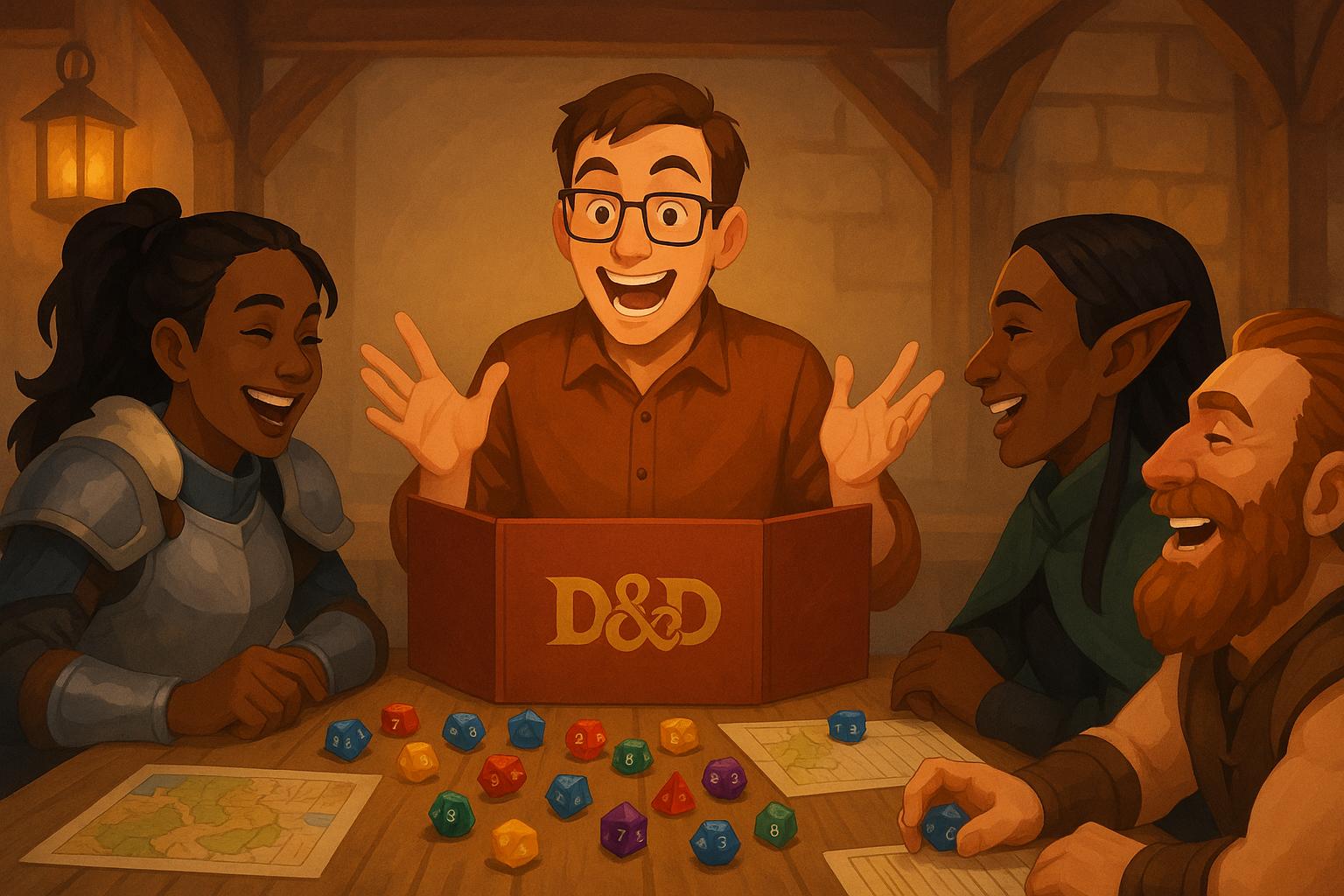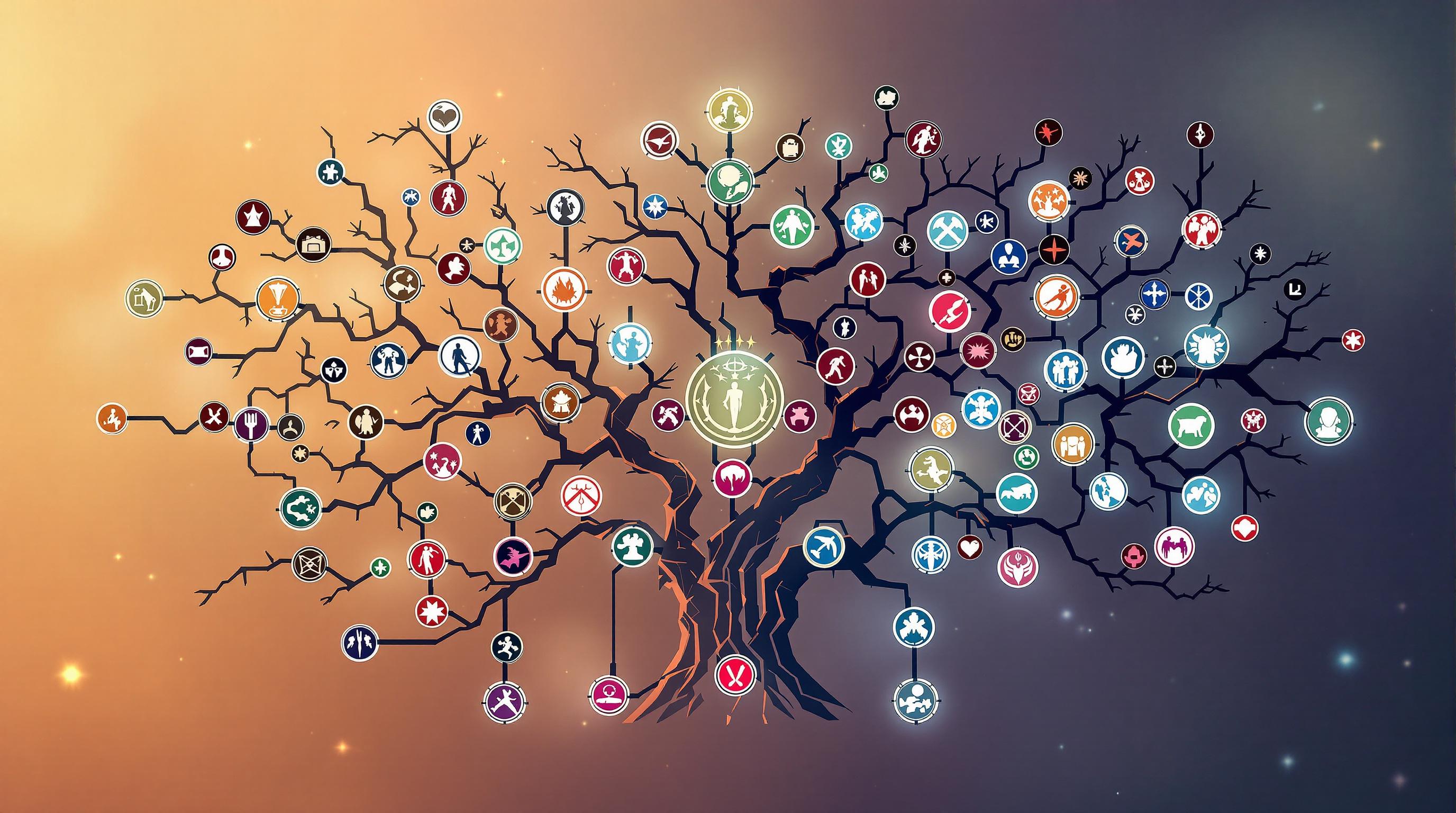Want to create balanced, engaging turn-based combat? Here's how:
- Core Mechanics: Build a fair action system, clear turn order, and strategic resource management.
- Encounter Design: Use diverse enemies, tactical battlefields, and varied objectives to keep gameplay fresh.
- Player Experience: Ensure smooth pacing, impactful power moves, and satisfying character progression.
- Testing & Feedback: Test thoroughly and gather player insights to refine your system.
This guide covers everything from designing combat mechanics to testing and improving gameplay. Let's dive in!
How Do You Improve Turn Based Combat?
Basic Combat Mechanics
Let's explore the key systems that define balanced and engaging combat gameplay.
Managing Player Actions
An effective action system encourages players to make thoughtful decisions. Actions are usually divided into these categories:
- Major Actions: Big moves like attacks or casting spells.
- Minor Actions: Smaller tasks such as moving or using items.
- Reaction Actions: Responses triggered outside a player's regular turn.
This setup keeps combat dynamic and ensures every turn feels meaningful.
Turn Order Systems
Turn order can make or break combat flow. Some systems use a fixed sequence for simplicity, while others rely on character stats to introduce unpredictability. Choose an approach that fits the complexity of your encounters and the experience level of your players.
Resource Systems
Resource management adds another layer of strategy to combat. Common systems include:
- Health Points (HP): Tracks endurance and reflects the challenge level.
- Energy or Mana: Limits the use of powerful abilities and requires careful timing.
- Special Resources: Unique mechanics, like rage or focus, that add extra strategic options.
Fine-tune these systems through testing to strike the right balance between depth and ease of use.
Building Combat Encounters
Create engaging combat encounters by combining elements that challenge players while keeping them invested. This goes beyond basic combat mechanics and focuses on how encounters are structured.
Enemy Types and Roles
Every enemy brings a specific tactical role to the table:
- Tanks: Durable foes designed to soak up damage.
- Strikers: Enemies focused on delivering high damage.
- Support: Units that boost allies or weaken player characters.
- Controllers: Opponents that shape the battlefield, like restricting movement or creating hazards.
Once you've chosen your enemies, think about how the battlefield impacts player choices.
Combat Areas and Movement
The layout of the battlefield plays a huge role in shaping strategies. Key elements to consider include:
- Cover: Areas that provide protection and force tactical positioning.
- Terrain features: Elevation changes, obstacles, or environmental hazards that add complexity.
- Movement zones: Spaces that encourage strategic positioning or limit mobility.
- Line of sight: How visibility impacts attacks and abilities.
The battlefield isn’t just a backdrop - it’s a tool to challenge players.
Combat Goals
To keep encounters dynamic, mix up the objectives:
- Time-sensitive missions: Introduce time limits to push quick decision-making.
- Resource management: Create scenarios where players must carefully conserve or allocate their resources.
- Interactive elements: Add features like destructible barriers, traps, or hazards that players can trigger to add depth to their strategies.
sbb-itb-b8b00a5
Combat Speed and Rhythm
When designing encounters, managing the pace and rhythm of combat is key to keeping players engaged. In turn-based combat, striking the right balance ensures players stay invested while making every tactical decision meaningful.
Player Turn Length
How long a player's turn lasts can make or break the flow of the game. Set a base timer with a small buffer to accommodate more complex actions. Use visual or audio cues to signal when time is running out, helping players stay on track.
With clear time limits, you can shift focus to gameplay elements that keep the action dynamic and engaging.
Building Tension
Combat feels more engaging when tension develops naturally. To achieve this, try adding:
- Challenges that grow harder as the battle progresses.
- Battlefields that change during combat, affecting tactical decisions.
- Momentum systems that reward players for chaining successful actions.
- Key decision points that can dramatically alter the outcome of a fight.
The goal is to focus on meaningful choices rather than relying on flashy visuals. This approach ensures every turn feels impactful with multiple viable options.
Avoiding Downtime
To keep players involved even when it's not their turn, implement mechanics that encourage active participation, such as:
- Reaction opportunities, where players can counter enemy moves or defend strategically.
- Chain effects that allow teammates to follow up on each other's actions.
- Dynamic repositioning that reflects changes on the battlefield.
Player Abilities and Choices
Expanding on the core combat mechanics, character choices add an extra layer of strategy to turn-based battles.
Character Class Balance
Each class should stand out with its tactical role - warriors focus on sustained damage, while support classes excel at controlling the battlefield.
Key elements for balancing classes:
- Action Economy: Every class should have meaningful options to consider each turn.
- Utility Value: Non-damage abilities should enhance overall combat effectiveness.
- Synergy: Abilities need to work well with teammates' skills.
As classes define their roles, their abilities should grow to match their purpose.
Ability Development
Abilities should scale in a way that broadens tactical options without making earlier choices obsolete.
A well-balanced system includes:
- Clear Growth: Players should easily see how upgrades improve their combat potential.
- Meaningful Options: Every upgrade should offer a distinct tactical benefit.
- Power Plateaus: Include natural points where horizontal growth (adding variety) takes precedence.
- Specialization: Allow players to excel in specific areas while accepting trade-offs in others.
Well-designed abilities pave the way for impactful power moves.
Power Moves
Power moves should feel impactful but not overshadow the core abilities that define gameplay.
1. Resource Investment
- Requires energy buildup over multiple turns.
- May involve sacrificing defense or other options.
- Often relies on coordinated team efforts.
2. Strategic Timing
- Best used in specific situations where they excel.
- Should have clear counterplay options for opponents.
- Often depends on precise positioning.
3. Risk-Reward
Include trade-offs that make their use a strategic choice:
- Potential vulnerability after use.
- Consumption of team resources.
- Commitment to certain positions or tactics.
| Ability Type | Resource Cost | Impact Level | Balance Consideration |
|---|---|---|---|
| Basic Actions | Low/None | Consistent | Core gameplay foundation |
| Special Abilities | Medium | Situational | Adds tactical flexibility |
| Power Moves | High | Game-changing | Limited but decisive moments |
This layered design ensures power moves can shift the outcome of a battle while keeping core abilities and tactical decisions essential to success.
Testing Combat Systems
Refining combat mechanics and encounter designs involves thorough testing across different scenarios to ensure everything works as intended.
Test Methods
Structured methods are key to evaluating turn-based combat systems.
Automated Testing
- Simulate thousands of combat iterations.
- Use AI to uncover edge cases.
- Analyze win rates and combat duration with statistical tools.
Manual Testing
- Run single-player scenarios with controlled conditions.
- Conduct multiplayer sessions to examine specific mechanics.
- Explore edge cases manually for deeper insights.
To keep testing organized, use a test matrix like this:
| Test Focus | Variables to Control | Success Metrics |
|---|---|---|
| Action Economy | Turn duration, action points | Average turns per combat |
| Resource Management | Starting resources, regen rates | Resource depletion patterns |
| Class Balance | Party compositions, enemy types | Win rate distribution |
| Power Move Impact | Activation conditions, frequency | Influence on outcomes |
Using Player Feedback
Technical tests are crucial, but player feedback adds another layer of value. Gather structured insights to uncover areas for improvement.
Feedback Channels and Metrics
- Surveys about combat encounters.
- Post-session discussions with players.
- Recorded gameplay sessions for analysis.
- Metrics like time spent in combat, action selection trends, and resource usage.
- Player satisfaction ratings to gauge overall enjoyment.
Focus on specific elements when analyzing feedback:
- Combat pacing and overall flow.
- Clarity in decision-making.
- Depth of tactical options.
- Player perceptions of power levels.
Common Problems
Combat systems often face recurring issues that need addressing.
Balance Issues
- Overpowered strategies dominating gameplay.
- Resource systems that feel either irrelevant or overly restrictive.
- Power moves that lead to predictable outcomes.
Engagement Problems
- Long delays between player actions.
- Limited tactical choices in regular encounters.
- Combat patterns that become too predictable.
System Fixes
1. Action Economy Adjustments
Monitor average turn times and make improvements:
- Simplify routine actions.
- Introduce parallel resolution systems.
- Clarify action priorities to reduce confusion.
2. Resource Management
Fine-tune resource systems through repeated testing:
- Track how resources are consumed.
- Adjust regeneration mechanics as needed.
- Ensure resource choices feel meaningful and impactful.
3. Combat Flow
Make pacing smoother with targeted changes:
- Minimize situations that lead to decision paralysis.
- Use simultaneous resolution mechanics where possible.
- Add dynamic elements to keep encounters fresh and engaging.
These iterative adjustments are essential for creating a well-balanced and enjoyable combat system.
Wrap-Up
Main Points
Here’s a quick rundown of the key ideas we’ve covered. Crafting balanced turn-based combat means focusing on a few critical areas to ensure gameplay remains engaging and fair:
- Core Combat Mechanics: Build around a smooth action economy, clear turn sequence, and resource management that challenges players without feeling overly limiting.
- Encounter Design: Use diverse enemy types, design combat spaces that encourage strategic movement, and establish clear goals for each encounter to keep things meaningful.
- Player Experience: Keep players engaged with well-paced turns, smart use of power moves, and satisfying character progression.
By focusing on these areas, you can maintain a challenging and engaging experience. Check out the examples below for practical tips.
Further Reading
For real-world examples of balanced turn-based combat systems, the TTRPG Games Directory is a great resource. It offers a wide range of games that showcase effective combat pacing, resource management, and encounter design.


